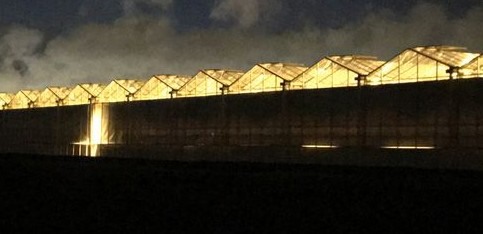Passed on December 8th, 2020 by the municipality of Leamington, the “Greenhouse Light Abatement Bylaw” was enacted in an effort to curb light pollution by the region’s numerous greenhouse operations. Under the bylaw, greenhouse operators must close sidewall and endwall curtains an hour before sunset until an hour after sunrise. Similarly, ceiling curtains must remain closed during the same time frame although operators are allowed to open curtains by 10% by 2 a.m. and 6 a.m. to release excess humidity and heat.

Widely reputed as the greenhouse capital of North America, the municipality of Leamington and surrounding areas has a built greenhouse acreage exceeding that of the entire greenhouse industry in the United States. Covering more than 2,000 acres, the Leamington/Kingsville greenhouse industry produces vast amounts of vine crops, cut flowers and cannabis. With Kingsville having enacted a similar light abatement bylaw only months prior, it was only a matter of time before Leamington followed suit. And yet, many growers and producer associations feel that the decision was made too quickly and without sufficient input from greenhouse operators themselves.
As Joseph Sbrocchi, general manager at Ontario Greenhouse Vegetable Growers (OGVG) explains, “No one is contesting sidewall and endwall regulations; most growers utilizing supplemental lighting had them installed already as part of our good neighbor initiatives. However the reduction of light through the greenhouse ceilings present a much more complex issue. “Growers need the ability to crack open ceiling curtains to a small degree as growing conditions dictate in order to properly vent heat and moisture. Without this ability, you risk damaging crops.” As General Manager of the OGVG, Joseph emphasizes that he speaks only for greenhouse vegetable growers.
He continued in his explanation and says that “the buds are the growing points of the plant and being located at the top of the plant, they are directly exposed to the excess heat and humidity. The risk posed is way to large for growers to go along with this ill conceived bi-law. These budding fruits are the most susceptible to these stressors. Without sufficient venting, crop health can be severely damaged.”
“The limited venting ability is especially problematic in the spring and fall, as the temperatures quickly shift between 10°C and 25°C, so venting is especially important,” he further commented.
While the OGVG and greenhouse operators were involved in conversations surrounding the new bylaw, the decision towards nearly complete shading of the greenhouse ceilings was reportedly an awkward shock as the OGVG expected the decision to land around 85-90% shading at night, something similar to what had been struck in other jurisdictions in North America. Not only was the 100% shading (with exceptions between 2 a.m. and 6 a.m.) unexpected, but greenhouse operators and subject matter experts alike, consider it impossible due to unavoidable gaps and seams in shading materials. “Again, I cannot speak for anyone but the Greenhouse Vegetable growers”, summarised Sbrocchi; “but this decision is truly regrettable, was ill-conceived, and more so, leaves growers no choice but to contest it”.
Whereas violation of light abatement bylaws in Kingsville carry a stiffer fine, violations in Leamington carry a maximum fine of $1,000 with each violation considered a separate offense.
